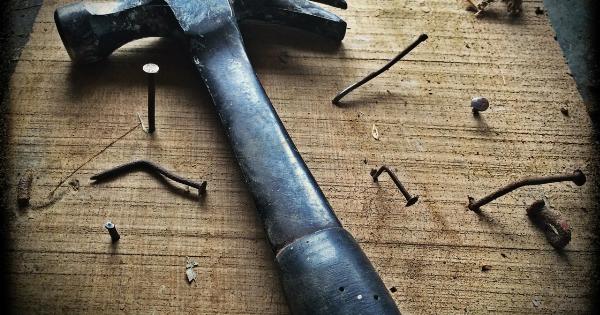Many people overlook the health of their fingernails, but changes in their appearance can actually indicate underlying health issues.
Fingernail abnormalities can be caused by various factors such as nutritional deficiencies, infections, trauma, or certain medical conditions. Understanding the causes behind these changes and knowing the appropriate remedies can help maintain healthy nails. In this article, we will explore some common fingernail changes, their potential causes, and effective remedies.
White spots on the nails
One of the most commonly observed fingernail changes is the presence of white spots or dots on the nails. These spots are usually harmless and indicate minor trauma to the nail matrix.
However, they can also be caused by fungal infections or zinc deficiency. To address this issue, keep your nails protected from trauma and utilize gloves while performing any heavy tasks. Eating a well-balanced diet and taking zinc supplements, if necessary, can also help eliminate white spots.
Brittle nails
Brittle nails are prone to splitting, cracking, and peeling. Several factors can contribute to this condition, including frequent exposure to water or chemicals, hormonal changes, and nutritional deficiencies.
To improve nail strength, moisturize your hands and nails regularly with a nourishing cream. Protect your nails by wearing gloves while doing chores. Additionally, ensuring an adequate intake of nutrients such as biotin, vitamin E, and iron can promote healthier and stronger nails.
Yellow nails
If your nails have a yellowish hue, it may be a sign of an underlying issue. Fungal infections are a common cause of yellow nails, often accompanied by thickening and deformation.
To treat this condition, antifungal medications may be prescribed by a healthcare professional. It is also crucial to maintain good hygiene and regularly clean your nails. Avoid using artificial nails or nail polish during the treatment phase, as it can worsen the infection.
Green nails
In some cases, nails can develop a green discoloration, which usually indicates a bacterial infection. Pseudomonas aeruginosa, a bacteria commonly found in soil and water, is often responsible for this condition.
To remedy green nails, proper hygiene is essential. Clean your nails thoroughly and keep them dry. If the infection persists, consult a healthcare professional who may prescribe antibiotics or suggest nail avulsion if necessary.
Beau’s lines
Beau’s lines are horizontal depressions that span across the nails. These lines can be caused by severe illness, malnutrition, or trauma to the nail matrix. Treatment depends on the underlying cause.
For example, if it is due to a temporary illness, the lines will eventually disappear as the body recovers. However, chronic conditions may require further examination by a healthcare professional to address the root cause.
Pitted nails
Pitted nails have small dents or depressions resembling the surface of an orange peel. This condition is commonly associated with psoriasis, a chronic autoimmune disease.
If you observe this change in your nails, consult a healthcare professional who may recommend specific treatments for managing psoriasis. In the meantime, keeping your nails moisturized and wearing gloves can prevent further damage to the nail bed.
Spoon-shaped nails
When nails have a concave shape resembling a spoon, it is known as koilonychia. This change can be indicative of an iron deficiency or iron-deficiency anemia.
Increase your iron intake by incorporating iron-rich foods into your diet such as spinach, lean meats, and legumes. In severe cases, supplements may be prescribed by a healthcare professional. Avoid exposing your nails to harsh chemicals or trauma to prevent further damage.
Clubbed nails
Clubbed nails appear swollen and rounded, often associated with underlying respiratory or cardiovascular diseases. If you notice this change in your nails, seek medical attention to identify and address any potential health issues.
The treatment relies upon managing the underlying condition.
Vertical ridges on nails
Vertical ridges are common and typically harmless, more commonly affecting older individuals. They occur due to the natural aging process and a decrease in cell turnover rate.
Moisturizing your nails, avoiding excessive filing, and maintaining a healthy diet can help improve their appearance. However, if the ridges are sudden, severe, or accompanied by other symptoms, it is advisable to consult a healthcare professional for further evaluation.
Horizontal indentations
If you notice horizontal indentations on your nails, it could be a result of an injury, severe illness, or a metabolic disorder. These lines are called Beau’s lines and can indicate a temporary disruption in nail growth.
Depending on the underlying cause, treatment may vary. Minor indentations may grow out with time, but severe cases may require medical assistance to address the underlying condition.
Conclusion
Proper nail care goes beyond aesthetics; it can also act as an informative window into our overall health. Understanding the causes and remedies for various fingernail changes allows us to identify potential health concerns and take appropriate action.
While minor nail changes can be a result of trauma or nutritional deficiencies, persistent or severe changes may require medical attention. By staying proactive and maintaining good nail hygiene, we can ensure that our nails remain healthy and strong.






























